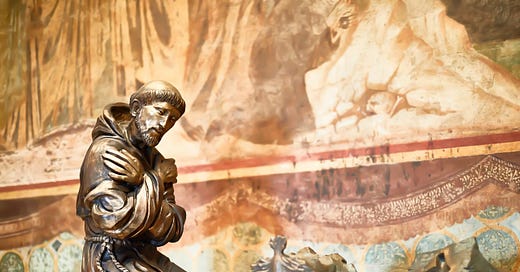We find profound meaning in art that transcends the boundaries between the physical and spiritual realms. The Ascension of Christ by Hans von Kulmbach captures this duality exquisitely – Christ's feet, grounded on earth, yet ascending into the heavenly realms, drawing our gaze upwards. This evokes the incarnational mystery, where the divine becomes flesh, merging the earthly and celestial. Similarly, the sculpture of St. Francis in Assisi subverts our expectations, depicting the Holy Spirit emerging from the soil beneath rather than descending from above. These works remind us that the sacred dwells not only in lofty heights but also in the humblest of places – the dirt beneath our feet.
Such art invites us to contemplate the world anew, to see the divine spark present in all creation. We learn to love and cherish the tangible reality around us, while simultaneously glimpsing its deeper essence and interconnectedness. This "second gaze" unlocks a sense of awe and joy, as we behold the ordinary made extraordinary through the lens of the sacred. The incarnation itself is a radical act of God entering our world, sanctifying the material realm. To truly embrace this mystery, we must honor the image of the divine within ourselves, our fellow beings, and the natural world in all its forms – from the grandest vistas to the smallest creatures and objects. Only then can we fully inhabit this realm while simultaneously touching the depths of a greater reality. Our spiritual journey becomes a full-bodied immersion, an all-encompassing embrace of the here and the everywhere, the seen and unseen, the temporal and eternal. It is a call to live fully present, awake to the sacredness permeating all that is.
(adopted from: Richard Rohr, The Artist’s Access to Mystery)






Rich and thought provoking.....thank muchly !!!